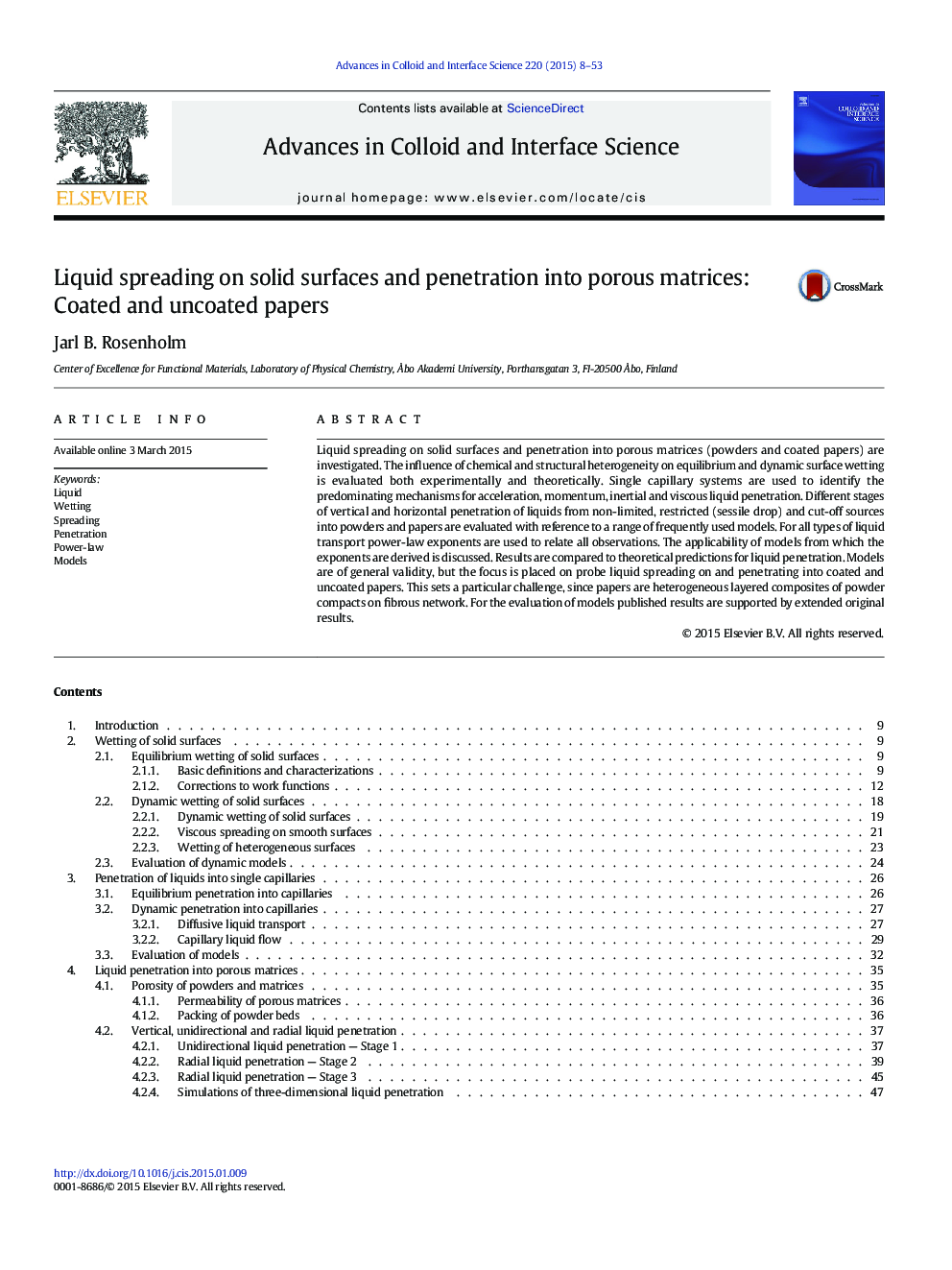| Article ID | Journal | Published Year | Pages | File Type |
|---|---|---|---|---|
| 590704 | Advances in Colloid and Interface Science | 2015 | 46 Pages |
•Chemical and structural heterogeneity of surface wetting is evaluated.•Acceleration, momentum, inertial and viscous liquid penetration.•Theoretical predictions for three-dimensional liquid penetration are evaluated.•Power-law exponents are used to unify observations.
Liquid spreading on solid surfaces and penetration into porous matrices (powders and coated papers) are investigated. The influence of chemical and structural heterogeneity on equilibrium and dynamic surface wetting is evaluated both experimentally and theoretically. Single capillary systems are used to identify the predominating mechanisms for acceleration, momentum, inertial and viscous liquid penetration. Different stages of vertical and horizontal penetration of liquids from non-limited, restricted (sessile drop) and cut-off sources into powders and papers are evaluated with reference to a range of frequently used models. For all types of liquid transport power-law exponents are used to relate all observations. The applicability of models from which the exponents are derived is discussed. Results are compared to theoretical predictions for liquid penetration. Models are of general validity, but the focus is placed on probe liquid spreading on and penetrating into coated and uncoated papers. This sets a particular challenge, since papers are heterogeneous layered composites of powder compacts on fibrous network. For the evaluation of models published results are supported by extended original results.
Graphical abstractTime dependent liquid (sessile drop) spreading on chemically and structurally heterogeneous surfaces and penetration into porous matrices are investigated. Penetration occurs via: Stage 1: Vertical and horizontal penetration under the drop, Stage 2: Radial penetration outside the sessile drop and Stage 3: Competitive penetration within the porous matrix. The most frequent models for surface spreading and bulk penetration are evaluated.Figure optionsDownload full-size imageDownload as PowerPoint slide
